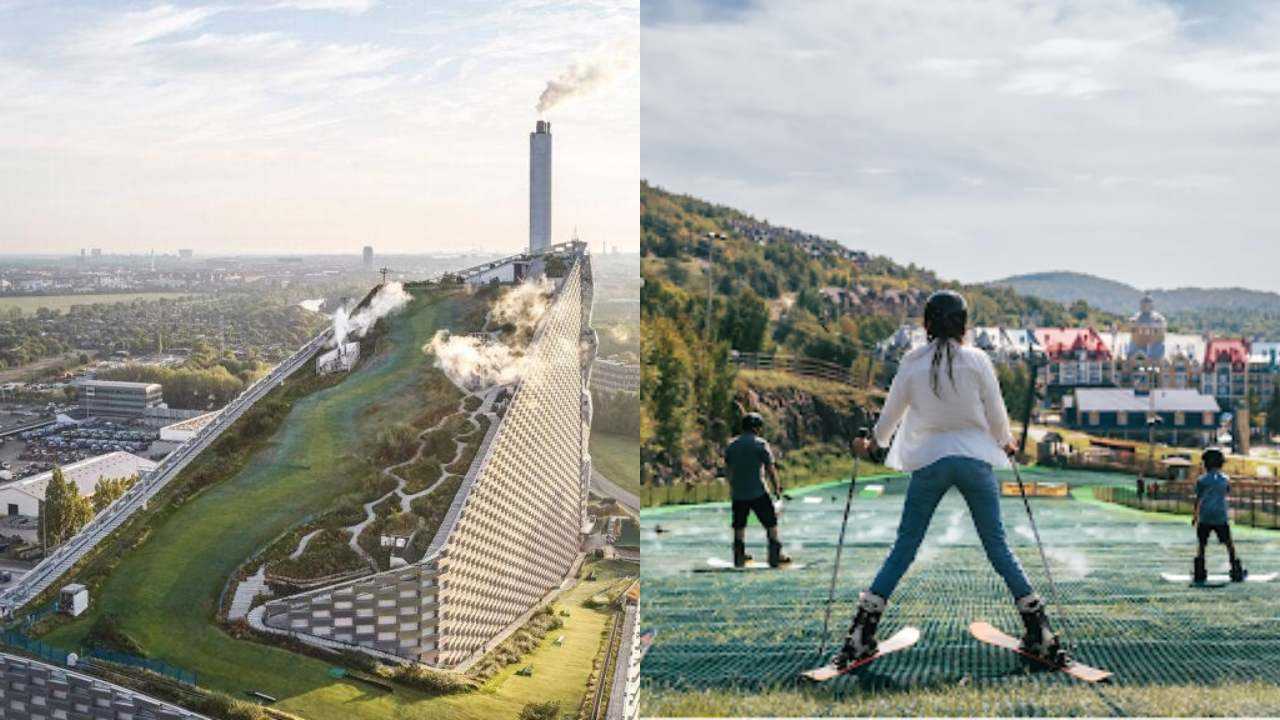The future of skiing could be snow-less

Images: Alamy/Tremblant
In the coming years, snow-skiing in swim trunks may be less of a viral social media post and more of a reality.
Snowpack season (the number of days with snow on the ground) has decreased by more than 15 days since 1955, according to the EPA. One recent study predicts that by 2050, the demand to produce artificial snow for ski seasons will increase between 55%–97%.
As a result, many mountains are increasingly being forced to open later and close earlier each year.
Enter: Dry skiing, a way to ski year-round that’s grown in popularity in recent years. It involves building a sloped, synthetic surface that mimics hard-packed snow by using concentric conical stems to provide grip.
Artificial skiing has been around since the 1950s, when Canadian-born ski jumper Jacques Brunel patented the first "Artificial Skiing Mat." But it’s been gaining popularity more recently.
- There are currently 1,000+ dry slopes across 50 countries.
- 👆 This includes the one pictured above in Copenhagen, a power plant/recreational building combo featuring a hiking trail, rock-climbing wall – and a ~1,300-ft-long ski hill. It opened in 2019, and attracts ~10,000 visitors/year.
👀 Looking ahead…Analysts say dry slopes might be the answer to future-proofing ski resorts – especially ones in lower altitudes.
Share this!
Recent Sports stories

Sports
| November 25, 2024Billionaire’s mysterious wife helps Michigan land nation’s biggest recruit
🏈 Last week, the nation’s #1 football recruit, QB Bryce Underwood, flipped his commitment from LSU to Michigan. And a billionaire’s mysterious wife may have been the deciding factor.

Sports
| November 14, 2024Inside the NFL’s push for world domination
🏈 The NFL – left without much room to grow in the US – is looking to international markets for its next phase of up-and-to-the-right📈.

Sports
| September 23, 2024The WNBA caps off a huge regular season
🏀 The WNBA playoffs tipped yesterday, capping off a potentially transformative regular season for the league that saw massive increases in attendance and viewership.
You've made it this far...
Let's make our relationship official, no 💍 or elaborate proposal required. Learn and stay entertained, for free.👇
All of our news is 100% free and you can unsubscribe anytime; the quiz takes ~10 seconds to complete